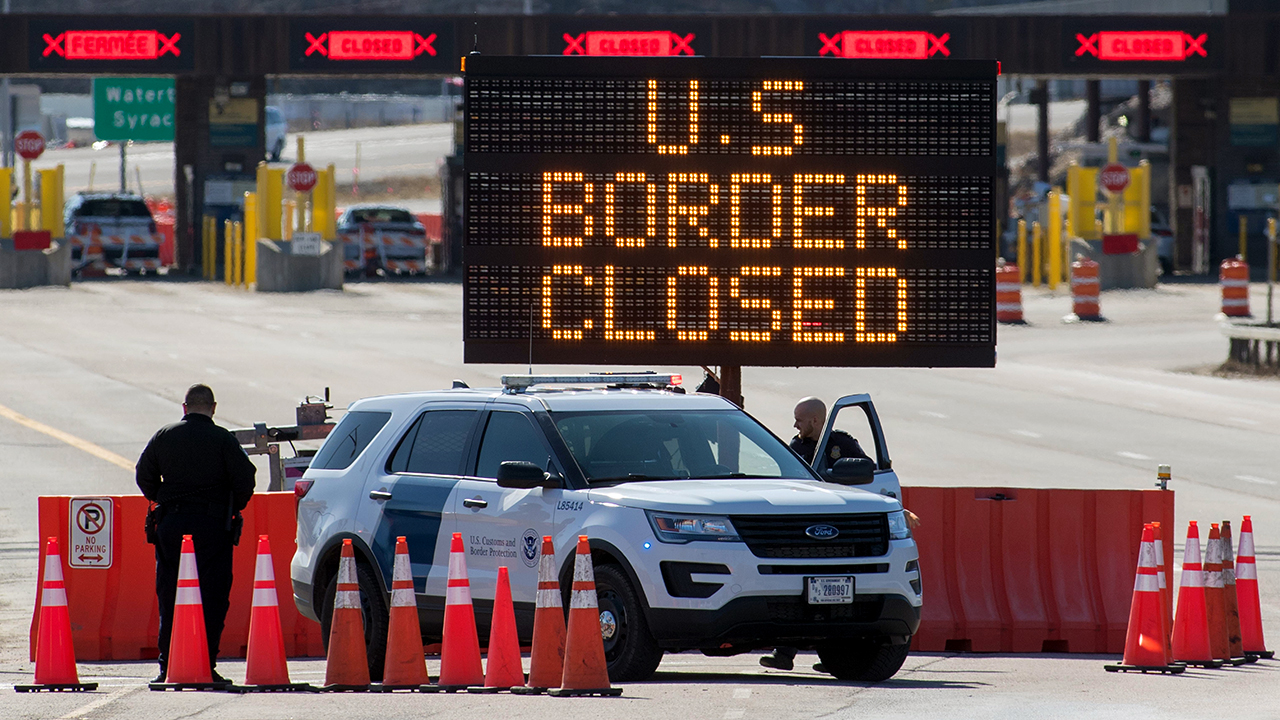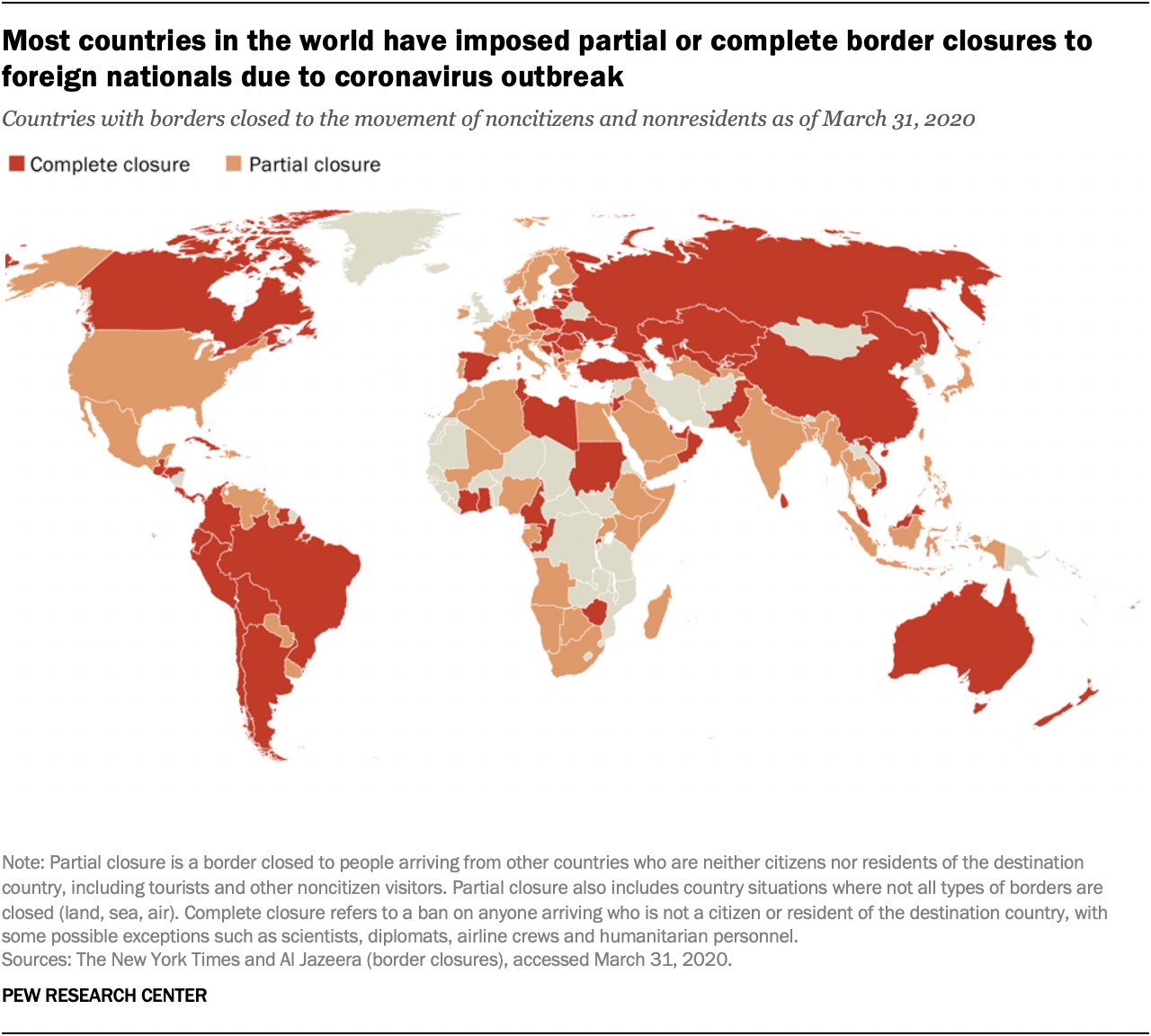

The movement of people across borders has come to a standstill in much of the world as countries close their borders to visitors – and sometimes their own citizens – in response to the coronavirus outbreak.

At least nine-tenths (91%) of the world’s population, or 7.1 billion people, lives in countries with restrictions on people arriving from other countries who are neither citizens nor residents, such as tourists, business travelers and new immigrants. Roughly 3 billion people, or 39%, live in countries with borders completely closed to noncitizens and nonresidents, according to a Pew Research Center analysis of border closure announcements and United Nations population data.
How we did this
At a time when a global outbreak of COVID-19 is influencing the policies of countries around the world, this analysis aims to quantify the number of people living in countries affected by border closures and travel restrictions. Pew Research Center matched border closures reported by The New York Times and Al Jazeera to international migration data from the United Nations from 2019 and 2020. As of March 31, 2020, 142 countries had complete (64 countries) or partial (78 countries) border closures put in place due to the COVID-19 outbreak. As more countries implement or expand travel restrictions, these numbers are expected to grow.
A country with a complete border closure generally refers to a ban on all people arriving who are neither citizens nor residents of the destination country, such as tourists, business travelers and new immigrants, with some exceptions for commercial trade, and certain individuals, such as scientists, diplomats, airline crews and humanitarian personnel. A partial border closure includes restrictions on entry for foreign nationals arriving from certain countries who are neither citizens nor residents of the destination country. Partial closure also includes country situations where not all types of borders are closed (land, sea, air). Data for some countries is unavailable.
These travel and entry restrictions vary among the world’s most populous countries, but they all come at a time of reduced travel as airlines have slashed routes and tourism has plummeted.
China, home to more than 1.4 billion people, closed its borders to foreigners other than some diplomatic and scientific personnel starting March 28. India, with a population of nearly 1.4 billion, has largely closed its borders by suspending visas and requiring a two-week quarantine for all arrivals regardless of citizenship. The United States, where roughly 330 million live, has closed its borders to people who are neither citizens nor residents of the U.S. who arrive from China and from many countries in Europe, including the UK and Ireland.
In Japan, where this summer’s Tokyo Olympics have been postponed until the summer of 2021, travelers may not enter the country if they have traveled to countries with widespread coronavirus outbreaks. All arrivals, including Japanese citizens, must self-quarantine for 14 days if they have visited a larger list of countries affected by the outbreak, including several European nations.
A smaller number of countries, including Ecuador and several Central Asian countries, have closed their borders to all people, including their own citizens and residents.
Some nations are also banning entry by asylum seekers. The U.S. has said it will turn away potential asylum seekers at its southern border with Mexico as part of a move to close ports of entry to nonessential traffic. Canada has said it won’t hear asylum claims from those who enter by land from the U.S. In Europe, many asylum hearings and services have been suspended. (Greece had already suspended new applications for asylum during the recent Greece-Turkey border crisis.)
The world’s 272 million international migrants may have difficulty returning to their home countries in the near future due to increasing travel restrictions and fewer commercial airline flights. About 37% are from countries that have implemented near-complete border closures to noncitizens and nonresidents. Another 54% of the world’s migrants are from countries that have seen at least a partial border closure to travelers.
Meanwhile, countries are trying to keep borders open to the flow of goods. Commercial trade across the U.S.-Canada border, for example, is continuing. The same is true within European Union countries, though wait times for commercial movement between EU countries has increased substantially.
Correction: An earlier version of this post miscategorized the United Kingdom as having partial border closures in the map. Consequently, the total number of the world population that lives in countries with restrictions has changed. The number of migrants who live in countries with near-complete border closures has shifted as well.
